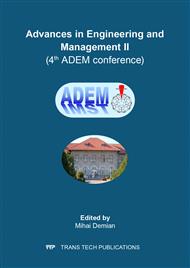p.103
p.111
p.118
p.126
p.136
p.142
p.147
p.155
p.165
Mathematical Modeling of Human Capital Evolution at Micro and Macroeconomic Level
Abstract:
Knowledge of human potential and especially labor resources implies a system of indicators, a quantitative and qualitative analysis that is complex and truthful at all levels. Human resources are changing in size and features in an organization. We intend to represent the human resources of an organization and the changes they undergo by using mathematical modeling, differential equations and even default probabilities.
Info:
Periodical:
Pages:
136-141
Citation:
Online since:
April 2018
Authors:
Keywords:
Price:
Сopyright:
© 2018 Trans Tech Publications Ltd. All Rights Reserved
Share:
Citation:


